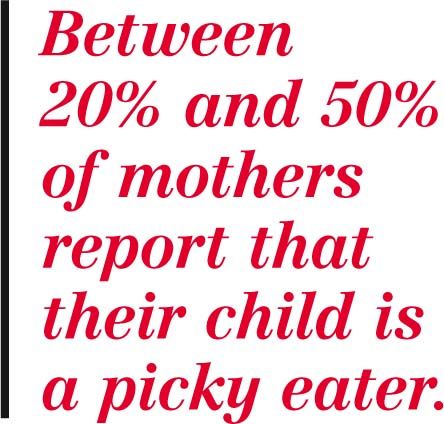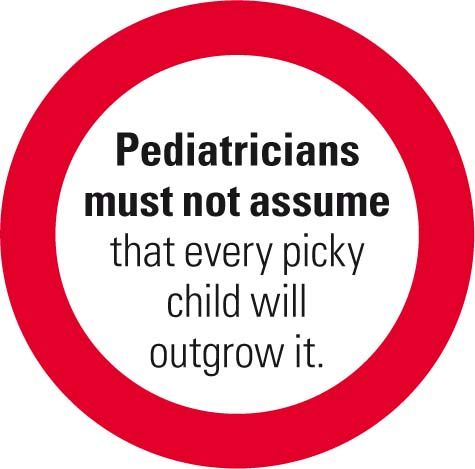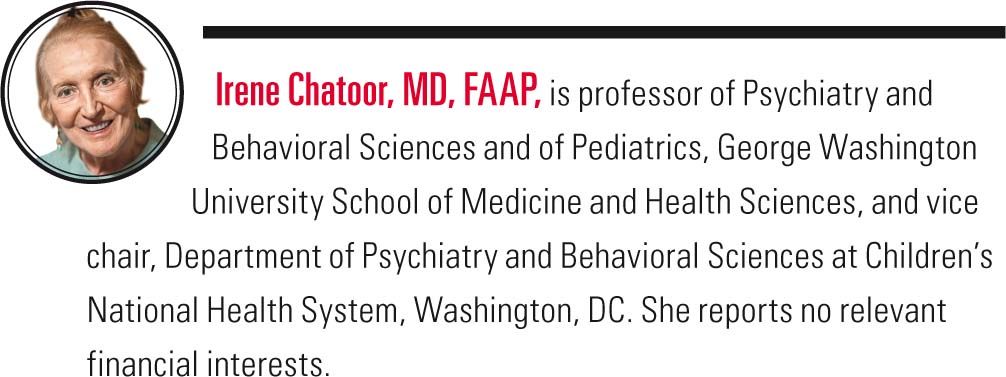Family meals matter
Teaching children healthy eating habits requires setting a good example by sharing meals with them, said Irene Chatoor, MD, FAAP, in her session "Food refusal: From picky eating to feeding disorders."
Teaching children healthy eating habits requires setting a good example by sharing meals with them, said Irene Chatoor, MD, FAAP, in her session "Food refusal: From picky eating to feeding disorders" at AAP 2016.
More: 5 baby steps to better nutrition
Chatoor said her research and clinical experience have demonstrated the importance of family dinners. When parents model eating during family meals, children eat more; they become curious about what their parents are eating; and eventually they want to try those foods themselves. However, in a time in which parents feel very pressed for time, they may skip breakfast, inhale lunch at work, and wait until their children are in bed to eat dinner themselves. Children who eat alone-often in front of TVs-can develop terrible eating habits. They may want to eat palatable snack foods and refuse healthier vegetables and fruits, or refuse to sit at the table for a meal.

Between 20% and 50% of mothers report that their child is a picky eater. Although the concept remains poorly defined, the spectrum of picky eating ranges from refusing to eat a few foods to having strong adverse reactions to certain foods. Some parents worry needlessly when their child refuses to eat certain foods. Children do not have to eat every single vegetable or every fruit or meat.
However, some children have strong sensory reactions to certain foods, marked by grimacing, gagging, or spitting out foods, and then they become fearful to eat those foods again.1 Forcing such children to eat the offending items intensifies their fear, which children may generalize to other foods and end up with a very limited diet. These children are not being stubborn or willful. Research indicates that some children may have many more taste buds than average, so these "super tasters" experience certain foods much more intensely than average. These children need help becoming desensitized to the strong taste or texture of the aversive foods. Besides the nutritional impact, children's avoidance of entire food groups also can limit them socially-complicating birthday parties, sleepovers, traveling, or camping.
It is important for pediatricians to reassure the parent of a child who has a limited but adequate diet, and to help families with children who have strong sensory food aversions overcome their aversions.

Chatoor also has described another group of so-called picky eaters who have a small appetite and would rather play and talk than eat. These children become underweight, and their food refusal generates intense anxiety in their parents. She described this feeding disorder as infantile anorexia because it starts in the first 3 years of life and is different from anorexia nervosa, which usually begins during adolescence and is triggered by the fear of being or becoming fat.1,2 In a study, two-thirds of these children outgrew their eating disorder and established a healthy weight by age 12 years.1,3 Parents of children who continued to eat poorly had few family dinners. These children grazed throughout the day, rarely eating enough to support healthy growth and development.
Her plea to pediatricians is that they help parents understand the importance of sitting and eating together with their children. Family dinners should be enjoyable. Parents often call restoring that activity the best result of bringing their children for treatment.

REFERENCES
1. Chatoor I. Diagnosis and Treatment of Feeding Disorders in Infants, Toddlers, and Young Children. Washington, DC: Zero to Three: National Center for Infants, Toddlers, and Families; 2009.
2. Kerzner B, Milano K, MacLean WC Jr, Berall G, Stuart S, Chatoor I. A practical approach to classifying and managing feeding difficulties. Pediatrics. 2015;135(2):344-353.
3. Chatoor I. When Your Child Won’t Eat or Eats Too Much: A Parents’ Guide for the Prevention and Treatment of Feeding Problems in Young Children. Bloomington, IN; iUniverse; 2012.
NEXT: Commentary
COMMENTARY
I completely agree with Dr. Chatoor about the importance of family meals for children with any eating disorder, including overweight and obesity. Children learn from and model themselves after their parents. When parents do not serve a family meal, children often eat typical kid food, in front of the TV.
I also agree with the "super tasters" concept. I have seen children to whom everything appears to taste much stronger. I also see children who prefer and seem to need stronger-tasting foods such as onions and spicy things in general, apparently to taste anything at all.
Next: New weight-management algorithm
The picky-eating spectrum encompasses many gradations. Some children may become fearful of certain foods because of a choking or vomiting episode. Some children will say they dislike a certain food, but would be willing to try it again, whereas more anxious children with strong sensory reactions likely would not.

Some of the examples and conditions Dr. Chatoor covers fall under the relatively new Diagnostic and Statistical Manual of Mental Disorders, Fifth Edition (DSM-5) diagnosis of avoidant/restrictive food intake disorder (ARFID).1-3 If restrictive food intake leads to weight loss or failure to achieve expected weight, certain nutritional deficiencies, or significant psychosocial impairment, the patient meets criteria for ARFID and needs special attention. Picky eaters and children with sensory food disorders who are undergoing specialized treatment also fall into this category.
Although I typically treat children aged 8 years and older, Dr. Chatoor's phrase "infantile anorexia" calls to mind anorexia nervosa, a condition marked by a fear of weight gain and an emphasis on body image, which infants and toddlers do not have. Here, too, I recommend the term ARFID.
Nomenclature aside, community pediatricians must not assume that every picky child will outgrow it. Pediatricians often tell parents, "Don't worry. As long as they're getting enough calories, give them what they want, and they will outgrow their pickiness."
The longer one goes with food aversions or very picky eating, the more likely these behaviors are to be solidified. Some children need specialized referrals. Look at the child as a whole. For kids who are generally more anxious, and/or those whose parents are extremely stressed about ongoing pickiness, it would perhaps be better to refer-so that a specialist can determine how significant the issue is-than to have the child present at age 12 or 13 years, when it is much harder to change eating habits.

REFERENCES
1. Nicely TA, Lane-Loney S, Masciulli E, Hollenbeak CS, Ornstein RM. Prevalence and characteristics of avoidant/restrictive food intake disorder in a cohort of young patients in day treatment for eating disorders. J Eat Disord. 2014;2(1):21.
2. Fisher MM, Rosen DS, Ornstein RM, et al. Characteristics of avoidant/restrictive food intake disorder in children and adolescents: a "new disorder" in DSM-5. J Adolesc Health. 2014;55(1):49-52.
3. Kreipe RE, Palomaki A. Beyond picky eating: avoidant/restrictive food intake disorder. Curr Psychiatry Rep. 2012;14(4):421-431.
Mr Jesitus is a medical writer based in Colorado. He has nothing to disclose in regard to affiliations with or financial interests in any organizations that may have an interest in any part of this article.